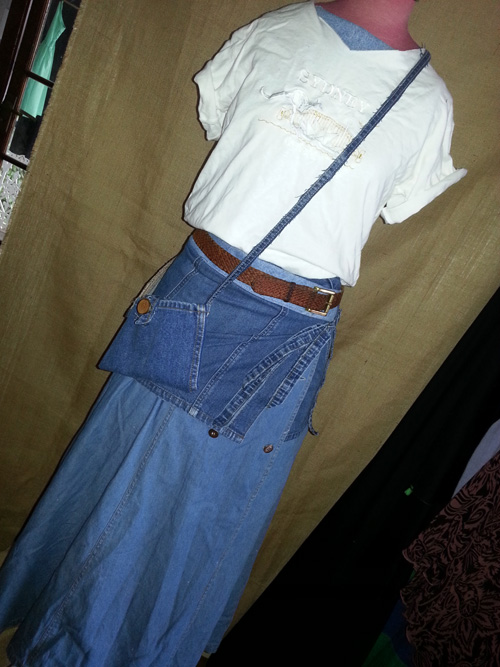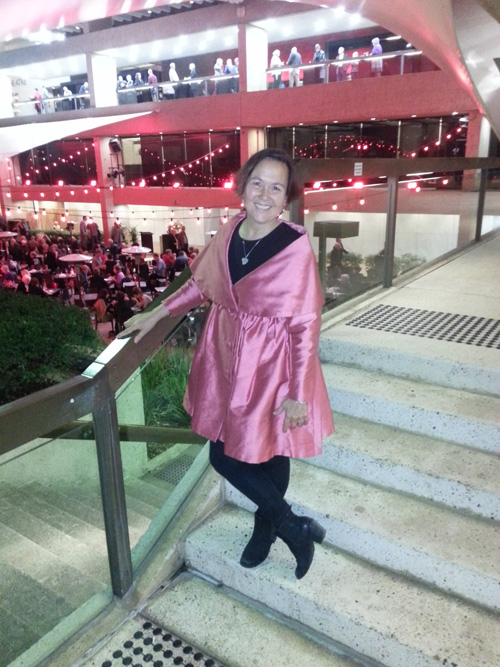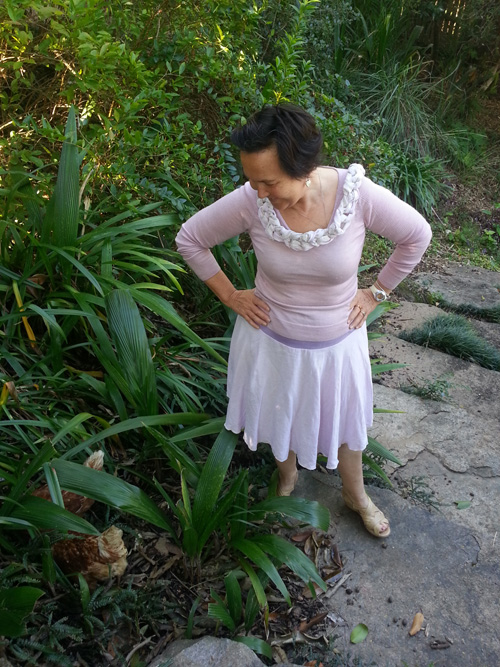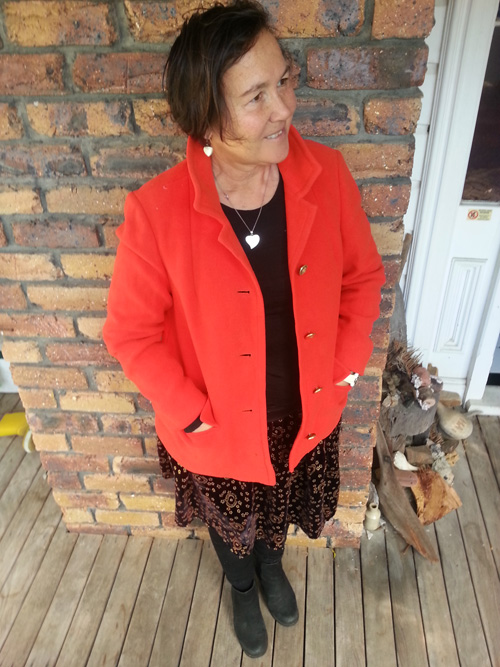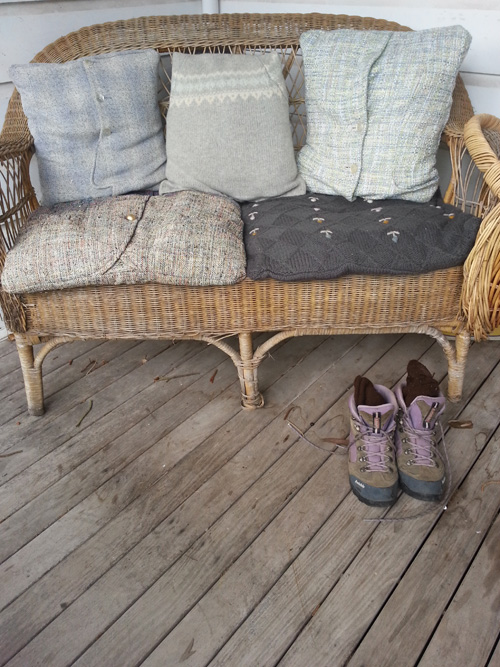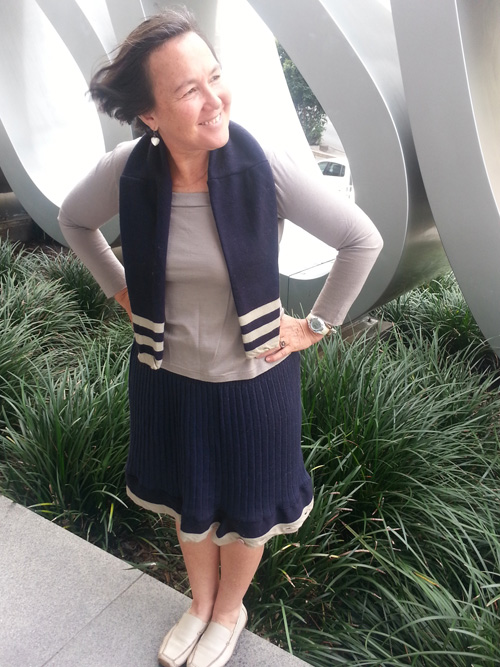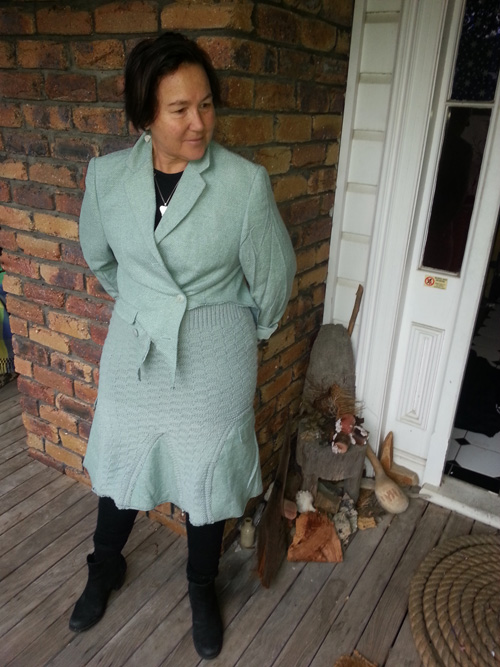 A quick photo and post today, since we spent a lovely day in Toowoomba visiting beautiful Gabbinbar Homestead and tasting menus at The Angel Cafe as our son Casey and fiancee Jenna finalise details for their wedding next year.
A quick photo and post today, since we spent a lovely day in Toowoomba visiting beautiful Gabbinbar Homestead and tasting menus at The Angel Cafe as our son Casey and fiancee Jenna finalise details for their wedding next year.
Gabbinbar is a splendid estate that once was the summer resort for Queensland Governors and is now a wedding and function venue which offers elegant, spacious and authentic buildings and gardens for what will be a special day for the Milburn and Moir families in May next year.
It was great to see original features, including sketches of The Newest Fashions in 1828, see image below, with Casey and Jenna on the left.
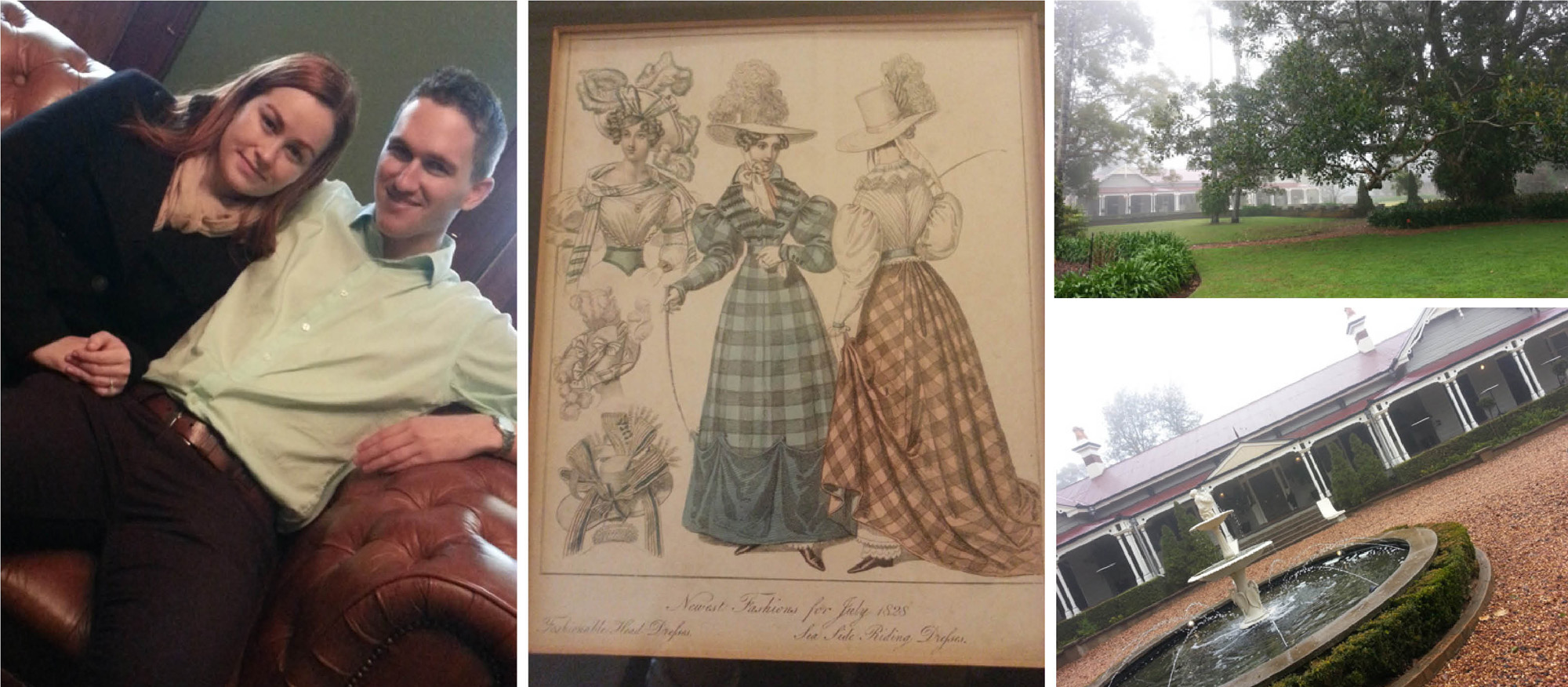
Sew 228 values the past-effort that went into this hand-knit wool vest that was languishing in an op shop and unlikely to be worn as it was. I could see its potential to become a skirt by turning upside down and filling the ‘gaps’ with fabric from an unworn silk/wool blazer also picked up at op shop. I un-stitched the vest at the shoulders then pinned and cut pieces from the bottom of the blazer to fill in the neck and arm openings – aligning the bottom of the jacket with the new bottom of the knit (once the shoulder seam). I stitched these pieces in place with two rows of zigzag, and used hat elastic to secure the skirt waistline. What was left of the blazer works as a jacket with irregular hemline (zigzagged to prevent fraying), after I removed the shoulder pads and added another button to secure it off-centre at the front. I was happy with this creative result from rejects, which are a great colour match but with different texture and fabric.
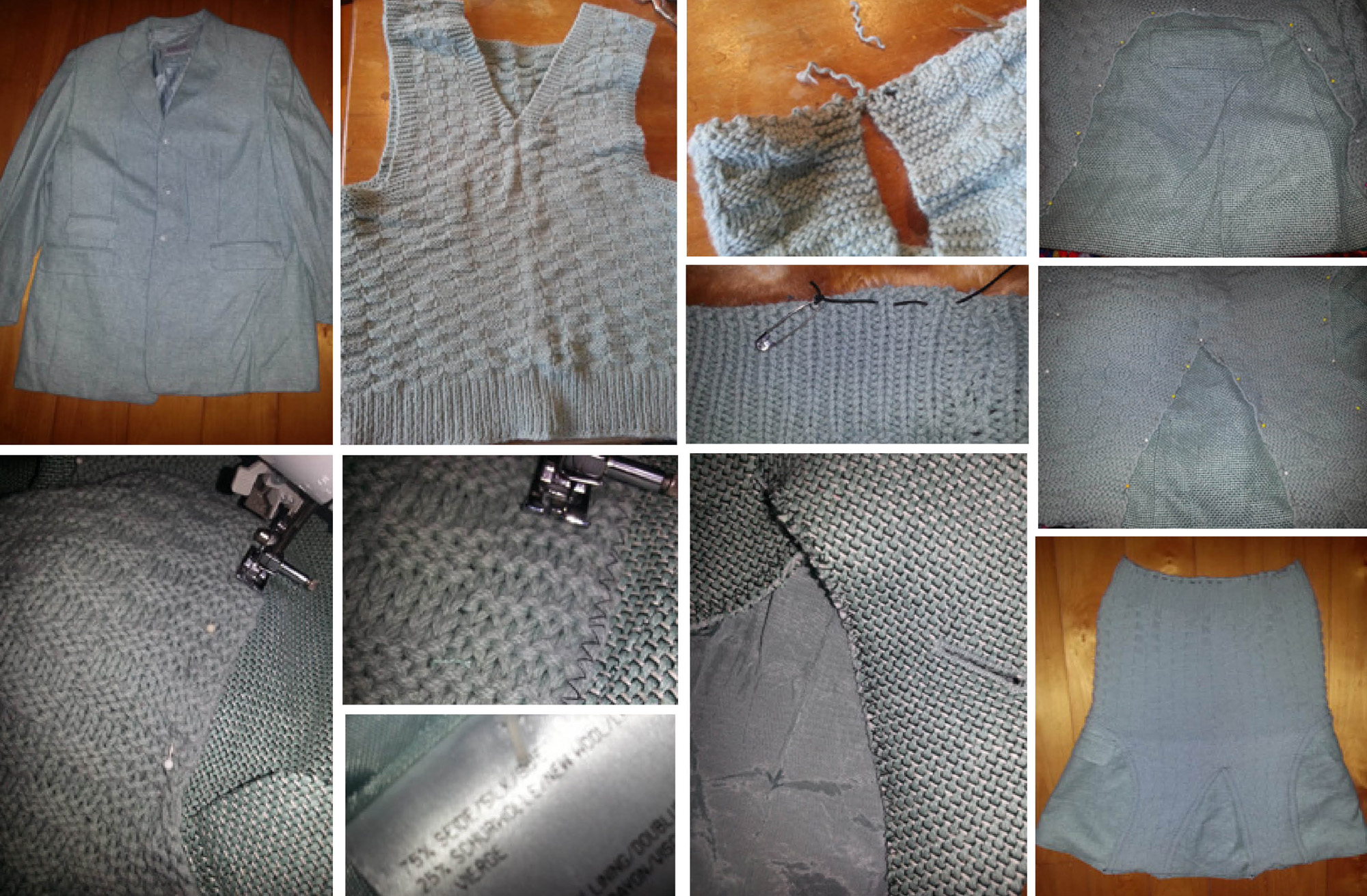
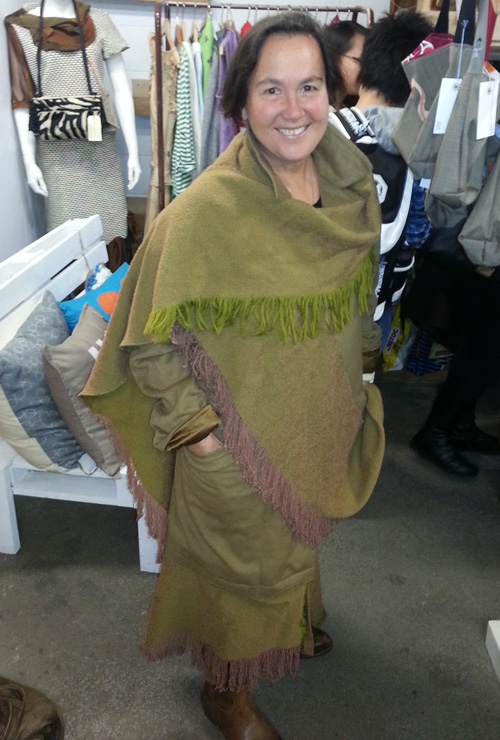 National Op Shop Week begins today and will bring focus to the role of opportunity shops in extending the useful life of consumer goods. By donating to, or purchasing from, op shops we tangibly make a social, ethical and sustainable contribution to society.
National Op Shop Week begins today and will bring focus to the role of opportunity shops in extending the useful life of consumer goods. By donating to, or purchasing from, op shops we tangibly make a social, ethical and sustainable contribution to society.
